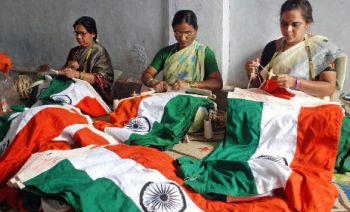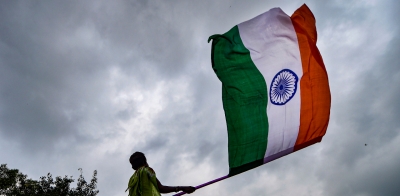By law, what material should be used to make the flag?

Khadi or hand-spun cloth is the only material allowed to be used for the flag, and flying a flag made of any other material is punishable by law with imprisonment up to three years, besides a fine. Raw materials for khadi are restricted to cotton, silk and wool. There are two kinds of khadi used: The first is the khadi-bunting which makes up the body of the flag, and the second is the khadi-duck, which is a beige-coloured cloth that holds the flag to the pole. The khadi-duck is an unconventional type of weave that meshes three threads into a weave, compared to the two weaves used in conventional weaving. This type of weaving is extremely rare, and there are fewer than twenty weavers in India professing this skill. The guidelines also state that there should be exactly 150 threads per square centimetre, four threads per stitch, and one square foot should weigh exactly 205 grams.
The Flag made of paper may be waved by public on occasions of important national, cultural and sports events. However, such paper Flags should not be discarded or thrown on the ground after the event. As far as possible, it should be disposed of in private consistent with the dignity of the Flag.
The MHA has advised avoiding the use of plastic flags since plastic flags are not biodegradable like paper flags and do not get decomposed for a long time. Moreover, ensuring appropriate disposal of National Flags made of plastic commensurate with dignity of the flag, is a practical problem. Flags made of paper can be used by public and such paper flags should not be discarded or thrown on the ground after the event. Such Flags are to be disposed of, in private, consistent with the dignity of the Flag.
Picture Credit : Google
